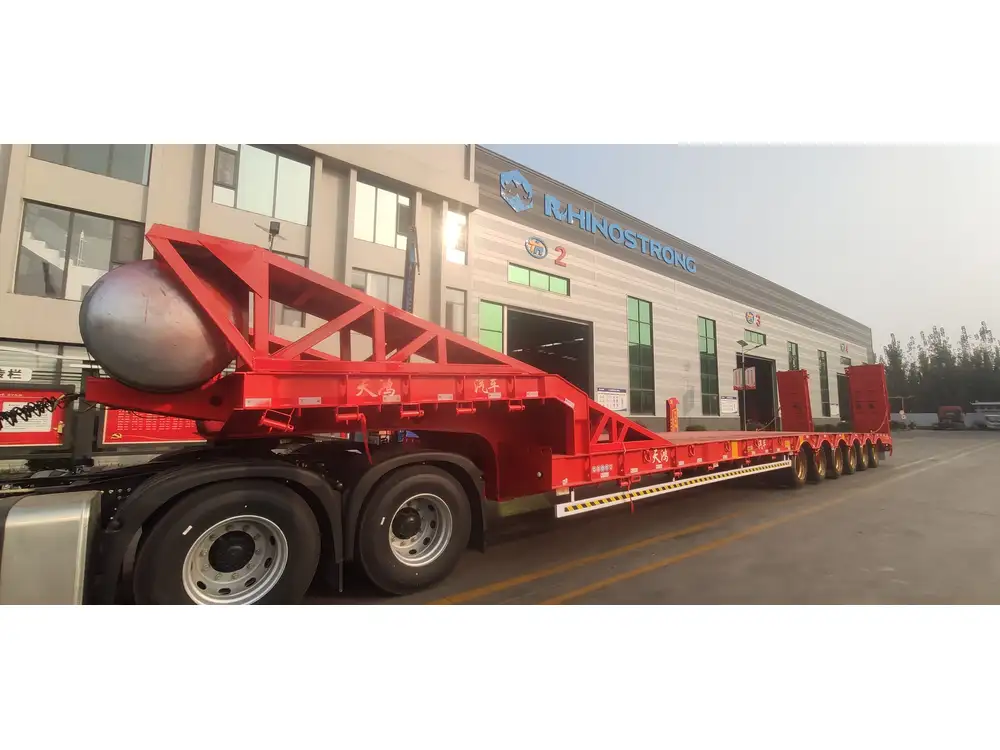When traversing the expansive landscapes of Alaska, where frigid temperatures are the norm for a significant portion of the year, logistics and transportation become intricate challenges, particularly for transporting goods via semi-trailers. One of the primary concerns for businesses operating in this region is whether heated semi-trailers are available and suitable. This guide will delve into the essentials of heated semi-trailers, addressing their significance, availability, and effectiveness in the Alaskan environment.
Understanding Heated Semi-Trailers
What are Heated Semi-Trailers?
Heated semi-trailers are specialized transport vehicles equipped with heating systems designed to maintain a consistent temperature within the cargo area. This feature is crucial for transporting temperature-sensitive goods such as food, pharmaceuticals, and chemicals that can be adversely affected by extreme cold.

Importance of Heating Systems
In glacial climates, conventional trailers may fail to protect cargo against freezing temperatures, leading to spoilage or damage. Heated semi-trailers mitigate these risks by providing controlled environments, ensuring that products retain their quality during transport.
Types of Heated Semi-Trailers
| Type | Description | Best Suited For |
|---|---|---|
| Reefer Trailers | Refrigerated trailers with adjustable temperatures. | Perishable food, pharmaceuticals. |
| Dry Van Trailers | Insulated trucks that maintain warmth without refrigeration. | General cargo that can tolerate low temperatures. |
| Custom Heated Trailers | Specialized trailers equipped with specific heating systems. | Unique cargo requiring precise temperature control. |
Analyzing the Alaskan Climate

Seasonal Temperature Variations
Alaska experiences extreme temperature fluctuations, characterized by:
- Winter (December to March): Temperatures can plummet as low as -40°F (-40°C) in many areas.
- Summer (June to August): Although mild, temperatures can still fall below 50°F (10°C) at night in certain regions.
This variance necessitates careful consideration when selecting transport options for seasonal goods.
Geographic Challenges
With diverse ecosystems ranging from tundra to forests, Alaska’s vast territories pose additional challenges. Remote locations often lack accessible infrastructure, making the reliability and functionality of heated semi-trailers crucial for maintaining supply chains.
Availability of Heated Semi-Trailers in Alaska

Local Manufacturers and Suppliers
There are several manufacturers and rental companies across Alaska specializing in heated semi-trailers, including:
- Northern Trailer Sales: Offers custom-built heated trailers suited for Alaskan winters.
- Alaska Ice & Fuel: Provides heated transport solutions catering to various industries.
Rental Options
For businesses that require temporary solutions during peak seasons, renting heated semi-trailers is common. Various local rental companies facilitate flexible contracts to accommodate fluctuating demand.
Key Features of Heated Semi-Trailers

Efficient Heating Mechanisms
Heated semi-trailers typically employ several effective heating systems:
- Electric Heating: Uses electric coils to generate heat, maintaining a consistent temperature but requiring access to power sources during loading and unloading.
- Hydronic Heating: Circulates hot water through pipes in the trailer to ensure uniform warmth across all cargo areas.
- Forced Air Heating: Uses powerful fans to blow heated air through the trailer, ideal for evenly distributing warmth.
Insulation
Insulation plays a pivotal role in enhancing the efficiency of heated trailers. Good insulation ensures that the temperature inside the trailer remains stable, reducing energy consumption. Options include:
- Foam Insulation: Ideal for maintaining temperature despite external conditions.
- Reflective Barriers: Minimize heat loss, especially effective in sunny yet cold conditions.
Benefits of Using Heated Semi-Trailers in Alaska

Preservation of Product Quality
The primary advantage of heated semi-trailers is the assured preservation of the product. Whether it’s fresh produce or sensitive pharmaceuticals, maintaining an optimal temperature can be the difference between success and loss.
Enhanced Supply Chain Reliability
For businesses in Alaska, delivering goods on time and in top condition is essential for operational efficiency. Utilizing heated semi-trailers increases reliability, ensuring that even in harsh conditions, products reach their destinations without freezing.
Increased Market Reach
By employing heated semi-trailers, businesses can expand their market options, enabling shipping of products that wouldn’t otherwise tolerate low temperatures. This capability allows for enhanced product offerings and customer satisfaction.

Considerations When Renting or Purchasing Heated Semi-Trailers
Cost Factors
While heated semi-trailers represent a significant investment, understanding the cost breakdown is crucial. Factors influencing pricing include:
- Type of Trailer: Reefer trailers often command higher prices than dry vans.
- Custom Features: Additional heating systems or insulation layers will increase the final cost.
- Rental vs Purchase: Businesses should weigh the benefits of long-term purchases against short-term rentals based on their operational needs.
Maintenance Requirements
Regular maintenance is paramount for ensuring the longevity and efficiency of heated semi-trailers. Key considerations include:
- Regular Inspections: Ensuring the heating system and insulation are functioning properly.
- Seasonal Preparations: Preparing trailers for winter months by checking seals and heating mechanisms.
- Cleaning Protocols: Maintaining cleanliness to prevent odors and contamination of cargo.

Compliance with Regulations
Transporting temperature-sensitive goods often comes with regulatory obligations, particularly in sectors such as food distribution and pharmaceuticals. Businesses must ensure their trailers comply with local health regulations and temperature tracking standards.
Conclusion: The Necessity of Heated Semi-Trailers in Alaska
Navigating the complexities of business in Alaska necessitates a robust understanding of logistics, particularly concerning the transportation of temperature-sensitive goods. Heated semi-trailers emerge as vital solutions to address the unique demands posed by the Alaskan climate. The assurance of product integrity, enhanced reliability in supply chains, and expansion of market opportunities highlight the advantages of utilizing these specialized vehicles.
In an environment where success hinges on adaptability and efficiency, investing in heated semi-trailers is not just a strategic move—it is essential for sustainability and growth in the Alaskan market. Whether choosing to purchase or rent these trailers, businesses must prioritize their operational needs, ensuring they meet the challenges posed by one of the most demanding climates in the world.
By addressing these essential considerations and harnessing the benefits offered by heated semi-trailers, companies can confidently navigate Alaskan logistics, outperforming competitors and ensuring the best possible outcomes for their shipments.



